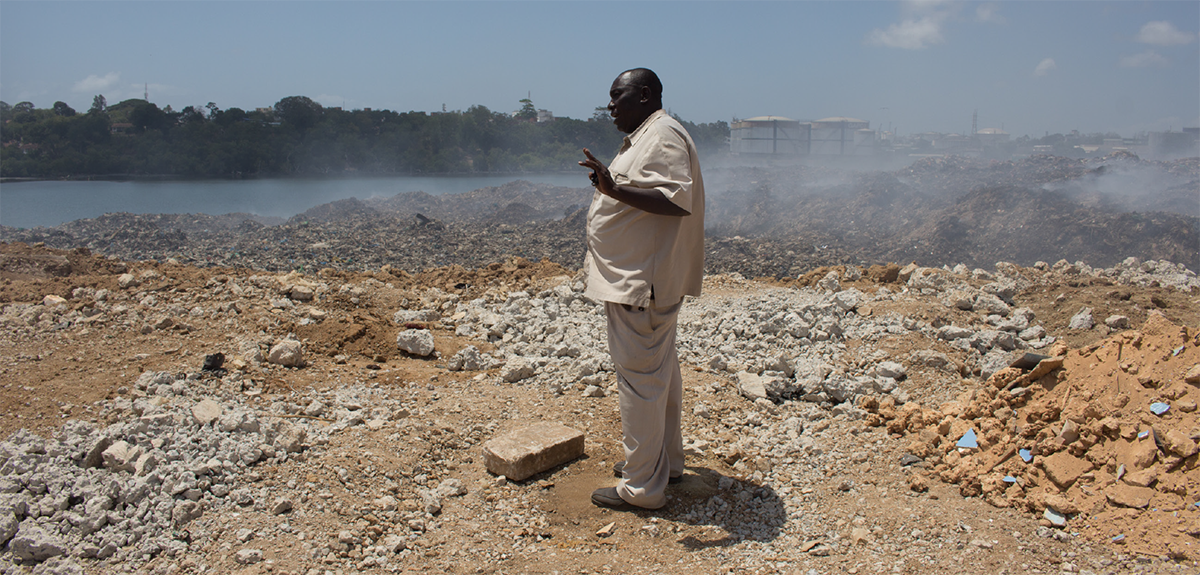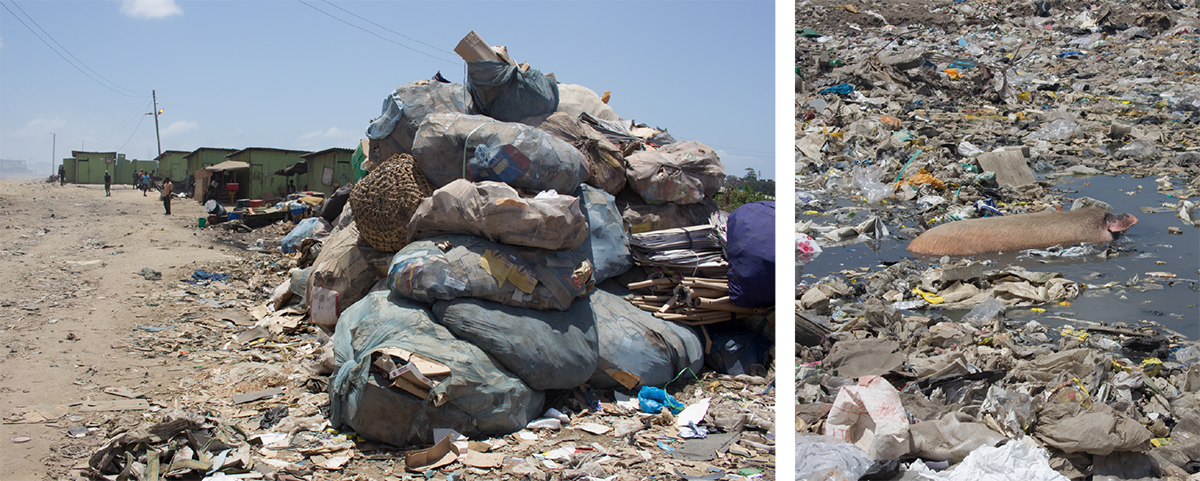Kibarani Dumpsite
Mombasa

Traveling by road, the way to Watamu took me through the port town of Mombasa – and I was eager to see how Kenya’s second-largest city, which sits on an island and the surrounding coastline, manages its trash.
A mutual friend arranged for me to meet one of the managers of the Kibarani dumpsite, where most of the city’s rubbish ends up. He introduced himself as Mr. Hongo, and very kindly agreed to show me around there and then. He also took the time to explain how it all works:
- Trucks are placed in the city, waiting to be filled up by collectors.
- Once they are full, the collectors alert the drivers, and the waste is driven to the dumpsite.
- At the dumpsite, people run after the trucks to catch it up and be the first to pick the „fresh“ waste.
- Once the waste is sorted and separated to big bags, they can sell it to recycling companies.
All the rest of the waste serves as landfill at the very same place: making layers of burnt dump and soil they plan to fill up the space between Mombasa island and the country to then close and relocate the dumpsite in a long run, so they can then recultivate the area and build proper recycling facilities.

There is a whole community of people living on the dumpsite. The Mombasa County supports them with housing, drinking water and occasionally food handouts. In their little village they don‘t only have their shacks to live but also shops for food, clothes and household goods. While telling us about the children‘s obligation to attend school, Mr. Hongo has to admonish three 9-12 year old boys scurrying past us, who appeared to be flaunting the regulations…
It was surprising how organized this dumpsite is – to me, it initially looked like a place where waste is dumped informally – but it is the city’s biggest dumpsite, allows the council to keep the rest of the city more or less clean, and supports a lot recycling.
Still, it urgently needs to be closed down: It used to be far outside the city, but the city now encloses it. It’s also one of the first things that visitors entering Mombasa by road or rail will see and smell – not an ideal welcome to a city that so depends on tourism for its economy.

-
<< Previous - Next >>